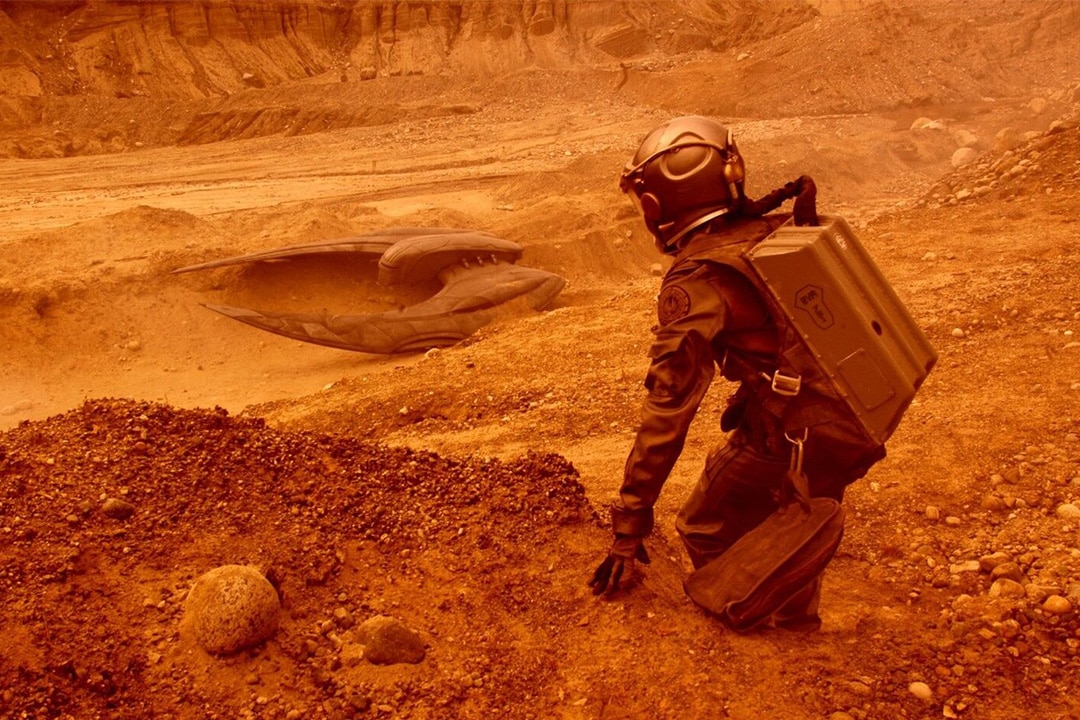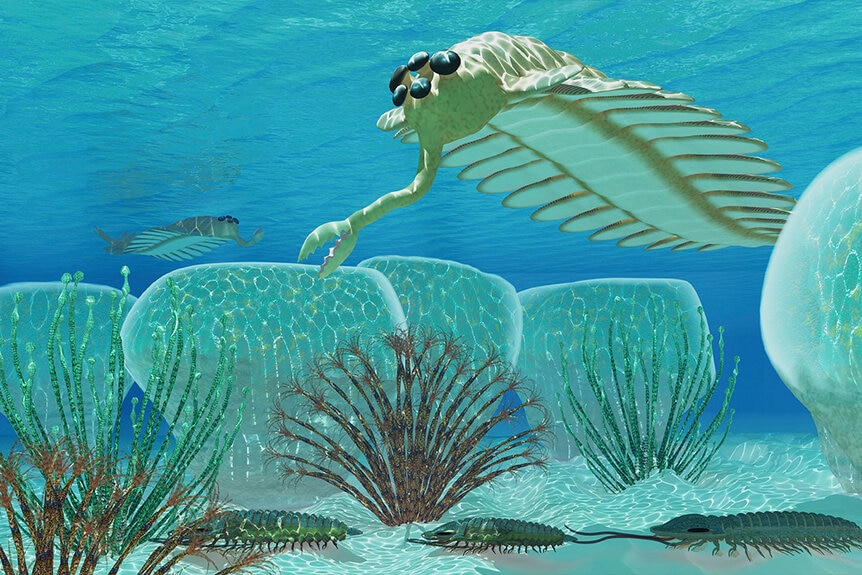Create a free profile to get unlimited access to exclusive videos, sweepstakes, and more!
Earth's ancient past might be the road map to discovering extraterrestrial life
Our own past was pretty alien.

“Daybreak,” the three-part series finale of the rebooted early 2000s science fiction series Battlestar Galactica (now streaming on Peacock!), did its best to close out every loose end the show had left trailing over its four season run. Using the last bit of juice they have, survivors land on a habitable planet where they encounter primitive hominids. By the time the credits roll, we learn that the planet in question is our own Earth, 150,000 years in the past. An epilogue before the final curtain call reveals Earth in the modern day, and the inevitable question: Is modern humanity doomed to repeat the mistakes and challenges of the past?
The big twist, of course, is that Galactica doesn't happen in our own distant future. Instead, it happened in our own deep past and we are now on the precipice of facing the same challenges. The universe is a wheel, to paraphrase the great Roland Deschain, and understanding how things happened in the past might be the best way to know how they’ll happen again in the future. As reported by Wired, that’s the thought process behind an exoplanet flow chart developed by Amber Young, an astronomer from North Arizona University, and colleagues.
RELATED: 'Battlestar Galactica' has one of the greatest sci-fi love stories in Roslin and Adama
The idea behind their decision tree is to categorize exoplanets based on a number of characteristics, and identify which of them are most likely to harbor life now or in the future. Importantly, their guidelines don’t only look for planets which resemble the Earth as it is today, but also as it has been throughout the last 4 billion years or so.
Think about it, an alien astronomer 3.5 billion light years away would be looking at a version of Earth entirely unlike the world today. Around that time, when the first simple life was emerging in the oceans, the atmosphere was filled with methane and carbon dioxide, and there was almost no oxygen anywhere on the planet. What little oxygen did exist quickly bound with iron in the ocean, forming rust. It wasn’t until the iron in the ocean was depleted that oxygen started to build up in the atmosphere, something which wouldn’t happen in earnest until 2.4 billion years ago.
If we were to look at our own Earth as it was half a billion years after it formed, we might overlook it as a potential place for life without even considering the ways in which it might change down the line. The decision tree, as outlined by Young and colleagues, seeks to catch life-bearing planets at any stage of their development.
“We’ve outlined a strategy to search for Earth-like exoplanets, and we’re not just limiting ourselves to life as we know it today, right here and now. There are several eras in Earth’s history in which life existed, when the atmosphere was very different, which tells us about the breadth of life that could exist on other worlds,” Young said, in conversation with Wired.
The process would start the same way as any other exoplanetary discovery, utilizing our growing fleet of ground and space-based observatories to peer into the cosmos. Once identified, astronomers would look to see if a newly discovered exoplanet is around a stable star (read: one that isn’t blasting out solar flares, with a lifespan on par with our own Sun) and in the star’s habitable zone. From there, astronomers rely on spectroscopy to decipher what compounds are present in the planet’s atmosphere.
Looking at the spectra bouncing off the atmosphere, scientists can determine if a planet has water vapor, methane, oxygen, etc. in its atmosphere. The presence of water vapor will be an important gate right off the bat, since we’d want to see the presence of water regardless of where the planet is in its several billion year evolutionary process. Finding water vapor in the atmosphere would be a good indicator that there’s a decent amount of liquid water on the surface of the planet.
RELATED: New analysis suggests we're too young and uncool for aliens to care about us
With all of those boxes ticked, astronomers would look for more definitive biological markers and that’s where they need to be liberal in what counts as an indicator of life. Just because there’s no oxygen on a planet as we see it today, doesn’t mean it isn’t capable of harboring life or even becoming the sort of cosmic oasis of complex life that Earth is today. The proposed decision tree would filter exoplanets into groups based on the spectrographic findings. We might find planets which strongly resemble the Earth as it is today and others which resemble the Earth as it once was. And others will be wholly different from anything we would recognize, but might harbor truly alien life.
While the James Webb Space Telescope (JWST) will be helpful in harrowing the field of potentially habitable worlds thanks to Webb’s Near-Infrared Spectrograph (NIRSpec), Young is really looking forward to the next class of spaced-based telescopes. Of particular interest is the Habitable Exoplanet Observatory, a proposed telescope with the specific goal of identifying and directly imaging Earth-like exoplanets. Its onboard spectrograph will be sensitive to the specific signals likely to indicate life, like water, oxygen, and ozone.
Finding life elsewhere in the universe might hinge on looking for worlds not like the one we have, but like the one we used to have. Hopefully, we avoid conflict with the Cylons along the way and don’t have to start the human endeavor over again on another planet.
Learn from our fictional past in all four seasons of Battlestar Galactica, streaming now on Peacock!



























